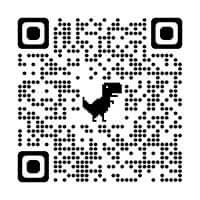Dental Sleep Medicine and Oral Appliances for Treating Sleep Apnea
How do I find out if I have sleep apnea?
The first step in diagnosing sleep apnea is to see your dentist who can tell you if you may be at risk by examining your tongue and teeth. If you have been told or know that you snore at night or you have been observed gasping or choking while sleeping, chances are likely that you may have sleep apnea. At Sunrise dentistry we offer a free sleep consultation in which we will screen you for the degree of sleepiness you have throughout the day, the observance of dental symptoms, the size of your neck and an analysis of your nasal and oral airway. If the consultation indicates that you are at medium or high risk of having a sleep breathing disorder, we will recommend that you take an overnight sleep study, which is then analyzed by a doctor of sleep medicine who will return a diagnosis and prescription if necessary based on your test results.

At Sunrise Dentistry we screen our patients for Sleep Wellness. What this means is we look for common attributes that indicate potential sleep disorders such as sleep apnea. Some of those attributes include the size of the tongue, clenching, bruxism (otherwise known as grinding) and scalloped tongue, which is the result of the tongue thrusting in efforts to keep the airway open while sleeping. The size of the neck and the amount of loose skin between the chin and the neck, also known as turkey wattle, is often a common physical attribute that may indicate an apneic tendency. In fact, people who have a crico-mental space (turkey wattle) larger than 1.5 cm who also have a larger than average tongue and an overbite, are 95% more likely to be suffering from sleep apnea.
Why Should I be Screened for Sleep Apnea?
In our office your overall health, not just your dental health, are very important to us. Dr. Strietzel uses an oral appliance to treat his sleep Apnea and as he learned more about the condition and its risks, he realized that our patient’s first line of defense is a visit to the dentist. Dentists are trained to recognize conditions in the mouth that are often indicators of Obstructive Sleep Apnea, And he feels that it is important for our patients to know if they are at risk, so they can protect their health. Untreated OSA can take 12-15 years off your life, and even more if you are a smoker. Many potentially life threatening conditions such as cardiovascular disease, high blood pressure, diabetes and stroke can be exacerbated by the decreased levels of oxygen created by sleep apnea. And we must ask ourselves how much do sleep disorders and oxygen deprivation contribute to a healthy person developing these illnesses?
If you have excessive sleepiness during the day this can be an indicator that your sleep is being compromised and for the sake of your health, you owe it to yourself and your loved ones to be screened. You are several times more likely to have a car accident and are 23.3% more at risk of a heart attack if you do not seek treatment.
What are my options if I am diagnosed with sleep apnea?
Here are most of the options for treatment of sleep apnea.
Surgery
There are several different kinds of surgeries that have been used to treat sleep apnea.
Uvulopalatopharyngealplasty (UPPP):
This procedure removes the uvula and tissue from the soft palate and is one of the more common surgeries used to treat obstructive sleep apnea (OSA). May result in difficulty swallowing long term and can be very painful.
Tongue Reduction
The surgeon actually removes a section of the tongue.
Tongue Retention/Suspension
A screw is placed into the mandible and then the tongue is tied forward and attached to it. 55% effective and can effect speech and swallowing.
Midline Glossectomy
A laser procedure that reduces tongue size.
Palatal implants (The pillar procedure):
Pillar-like inserts are placed in the soft palate to prevent the tissue from vibrating and collapsing against the tongue. This procedure is only effective if the soft palate is where the airway obstruction is originating and it can take several months to become effective.
Radiofrequency somnoplasty
An electrode is implanted and delivered radio frequency waves to burn excess tissue, creating a larger airway. The procedure has been known to eventually relapse and is only effective when used to treat the mildest forms of OSA.
Maxillomandibular advancement.
creating a larger airway. This surgery is the most extreme option and is usually reserved for patients with a severe diagnosis for whom other treatments have failed or for patients with deformed jaws. These surgeries can cost tens and thousands of dollars and significant discomfort and pain. Not all of the surgeries can be used for any degree of severity of the sleep apnea being treated. There are also high incidences with some surgeries not remaining effective over time.
CPAP BiPAP Therapy
CPAP and BiPAP therapy are considered the gold standards for treating sleep apnea overall. It is what we would recommend if a patient is diagnosed with severe


